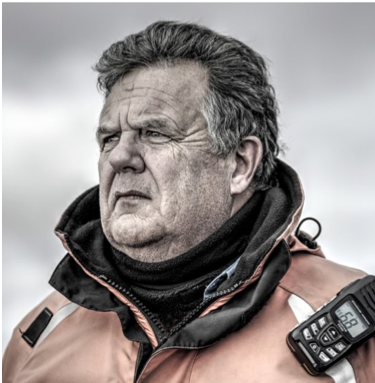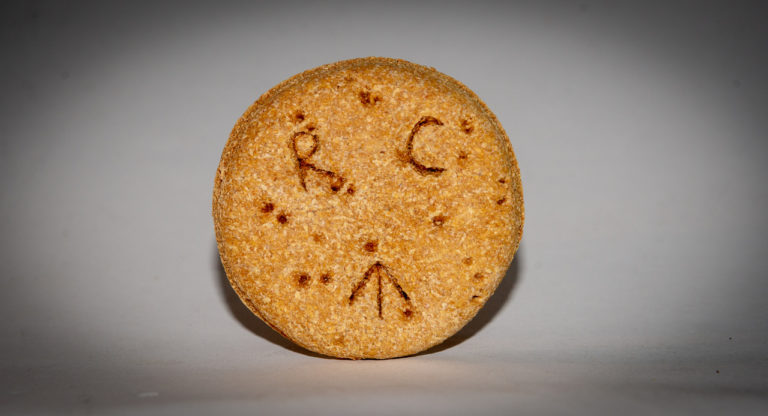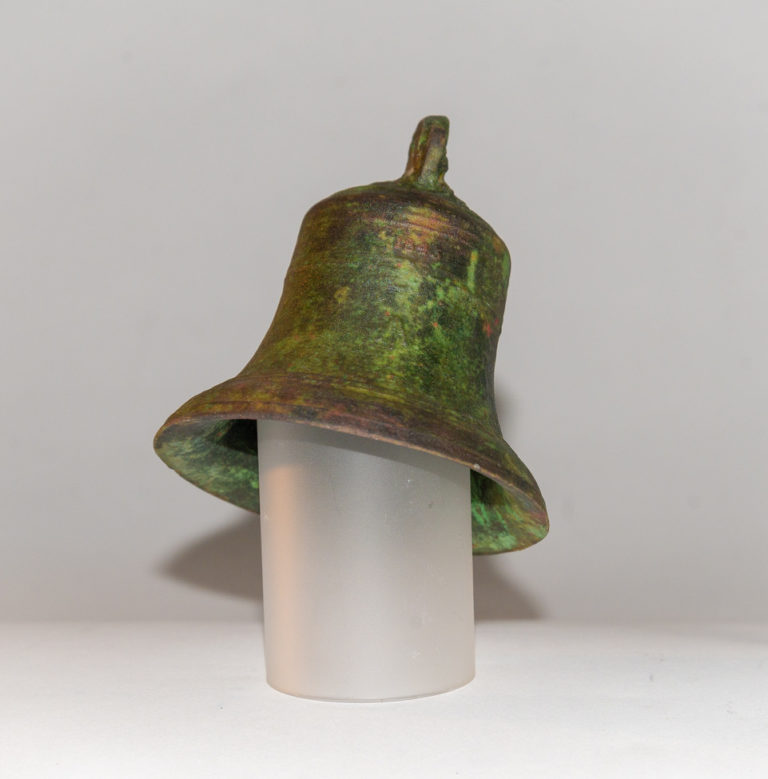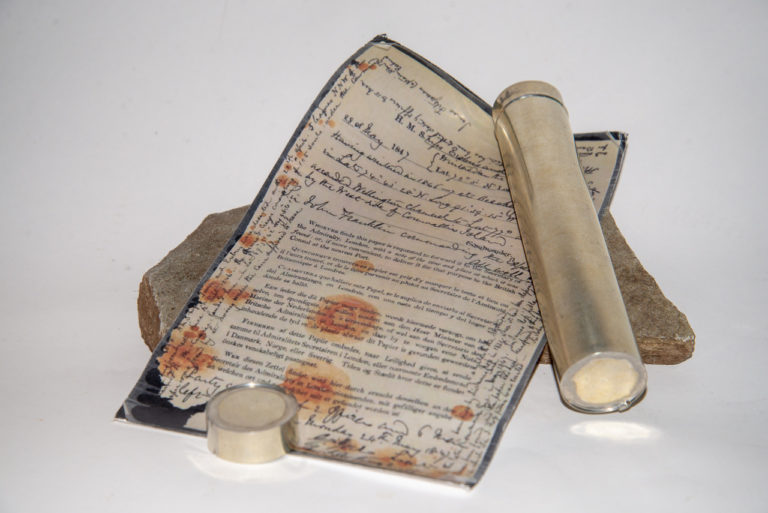One Ocean Expeditions is fortunate to be able to welcome onboard a diverse group of experts that add a fascinating dimension to our voyages. Arctic adventurer Ken Burton is one of those experts, and we were able to catch up with him between voyages recently. Ken joined us in the office and was able to tell us more about the storytelling pieces that he has onboard.
OOE: Ken, can you tell us a little more about yourself.
Ken: I’ve spent 25 years in the Arctic, working in different capacities, from working as an RCMP Captain of coast patrol to Zodiac driving, logistics and guiding ashore. I’ve also worked as the Executive Director of the Vancouver Maritime Museum. In 2000 I retraced the original Saint Roch voyages which took 169 days and 24,000 nautical miles, circumnavigating North America in a non-ice-strengthened vessel.

OOE: As a Historian with OOE, you keep some interesting items with you to help tell the story of Franklin. Can you tell us about them?
Ken: Yes, we are lucky enough to have access to a ‘Franklin Interpretive Kit’ provided by Parks Canada. I’ve been bringing it on voyages for four years now. It’s a wonderful way to involve interested passengers in the Franklin story and it really sparks some interesting conversations.

OOE: What type of items are in the kit?
Ken: We’ve got a real sample of ‘hardtack’ which is what sailors in that era would have eaten. It’s a type of biscuit made of flour, water and salt that they could dip in tea or ale. It gives people a sense of the diet these sailors had. We also have several items stamped with the ‘broad arrow’ which is the stamp that marks objects as British government or naval property. In fact, it’s one of the reasons why the search for the Erebus was successful because a piece of metal from the vessel was found in the area that was stamped with the broad arrow, which gave researchers the certainty that they were looking in the right place.

OOE: What piece in the Interpretive Kit do you think captivates passengers most?
We have a 1/8 exact replica of the Erebus bell. It’s a computer-printed resin model, and it’s so precise you can detect the marine growth and broad arrow still on it. It has that mystique because it was the heart of the ship. People are fascinated by it.

OOE: What is your favourite piece that you carry in the kit?
Ken: I really love the deck prism. It’s a prism that is flat on one side, and it was used to reflect light below deck. It makes you think; they wouldn’t have had any electricity or ways to get light down on the lower deck. This is how they did it, and it’s a simple, elegant solution. It showed ingenuity and raises more questions, like how did they heat the ship? What did they do for bathrooms? It brings out a natural conversation about what life was like to live on these ships in the 1800s.
OOE: What are some other items passengers can look forward to seeing if the Interpretive Kit is on board?
Ken: There’s a British dinner plate. The one we have is a modern plate, but it’s the same pattern as a plate found on the Erebus. Sailors would bring their own place settings with them on their voyages with their own family crest or their own pattern. We also have a metal canister that the sailors kept messages in. Inside this one, we keep a replica of the note left at Victoria Point – the note that was left by Crozier and his men. This particular note stated that all was fine, but they went back to the cairn where it was kept and scribbled around the original message that things had taken a turn for the worst. Shortly after leaving this note, the men walked south and died along the way. We also have a pair of Inuit snow goggles made of bone. People have fun trying them on. I also show them scuba diving gloves, an underwater flashlight, pencil and search grid and try to get people to put the gloves on and try to write on the grid. It’s not easy!



OOE: Thanks so much for sharing with us, Ken! We hope our passengers enjoy the opportunity to explore the Franklin Interpretive Kit. Where can they find you next?
Ken: I’ll be travelling with One Ocean Expeditions on some Antarctic voyages in December and January, then on to the Central America voyages in the spring. I’ll be continuing to travel, write and lecture throughout the year as well.
If you’re interested in learning more about the Franklin Expedition through Ken’s eyes, you can pick up a copy of his book ‘A Guide to Adventure Through the Northwest Passage’ or you can catch him onboard various One Ocean Expeditions voyages. Please get in touch for more information.















